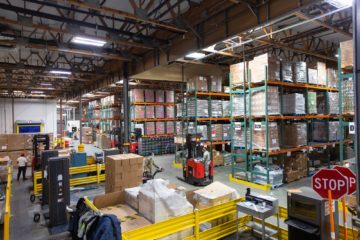Written by Sandie Zúñiga Nierenberg, CEO/Founder.
In the wake of 2020, more people are thankfully asking the question: how do my actions and the organizations I support address racial inequality and cultural inclusivity? At the heart of EGC’s mission is cultural inclusivity: how we work to ensure cultural participation, representation, access, and expression in the food system, particularly with regard to the food insecure community. As a young organization, we ensure these questions are at the center of our programs and growth. And so instead of diving in head-first to a project with even the best-intentioned and researched ideas, we start by listening to the communities we seek to serve to understand what is needed and how we can serve in an effective, sensitive, and representative way.
At the most foundational level, this means instead of planting the seeds our volunteers are familiar with, we first worked with Second Harvest of Silicon Valley and other community groups to identify the foods they lack. These conversations led to an understanding that nutritional density, while important, is not where we can be most impactful. Rather, as a nimble organization we can fill the need for culturally-diverse, hyperlocal foods that are traditionally not donated to food banks but are crucial to enabling food bank patrons to cook foods they are familiar with and love. By enabling patrons to do this, we increase the likelihood that they cook whole foods at home, which is in turn tied to better health outcomes. (Science Daily, 2017). Enabling patrons to cook culturally familiar foods also positively influences patrons’ sense of ethnic and cultural belonging (Mills, 2017), which furthers EGC’s commitment to promoting cultural inclusivity in the communities we serve. Instead of delivering crates of carrots and european broccoli varieties, we delivered jalapeños, anaheim and poblano chiles, tomatillos, cilantro, squash, bok choy, gai lan, chinese cabbage, and a variety of other fruits, vegetables, and herbs found in the Latinx and Asian cuisines favored by the majority of Second Harvest’s patrons.
At the project level, these questions guide our decisions in site selection, educational resource development, content creation and more. As we grow, we are constantly looking at data on the communities we serve and the communities we seek to serve to understand where the needs are and the demographics of the communities in need. We pair that data with personal conversations with community members and organizations serving diverse communities to capture the intangible benefits of our work and identify areas to improve. We target our content to education not only in our core mission areas, but also around how racial inequality and cultural exclusion have impacted those core mission areas – from disparate rates of food insecurity among different populations to cultural appropriation of many common agricultural practices.
As we plan for 2021, we are excited to provide needed service to our community, provide personal, impactful opportunities for our volunteers, and bring diverse groups to the table to work together in combating food insecurity in a sustainable way. Whether through the produce we grow, the bonds we build, the awareness we spread, or the hours we spend, together we will make a difference.
Written by Sandie Zúñiga Nierenberg, CEO/Founder.
Sources:
Science Daily. (2017, March 14) Cooking at home tonight? It’s likely cheaper and healthier, study finds. www.sciencedaily.com.
Mills, S., White, M., Brown, H., Wrieden, W., Kwasnicka, D., Halligan, J., Robalino, S., Adams, J. (2017, April 1) Health and social determinants and outcomes of home cooking: A systematic review of observational studies, Science Direct, Volume 111, pp. 116-134, ISSN 0195-6663, https://doi.org/10.1016/j.appet.2016.12.022.


0 Comments